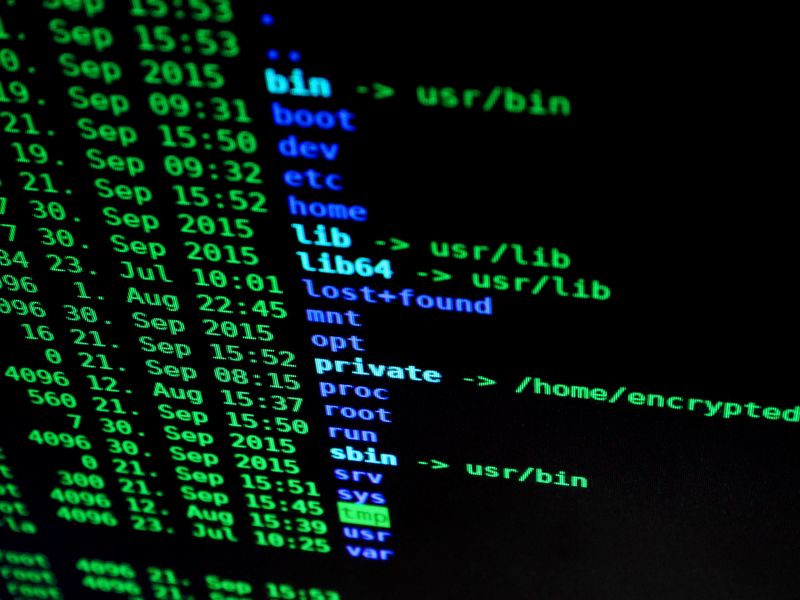Critical Infrastructure and the Risk of Digitization
As critical infrastructure systems around the world, such as energy, transportation, and healthcare, are rapidly digitizing, the need for robust cybersecurity measures becomes increasingly apparent. The convergence of information technology (IT) and operational technology (OT) brings about increased operational efficiency and cost reduction, but it also introduces significant security risks. Without effective security measures, the consequences can be severe. It is crucial for organizations to adopt an “assume breach” mindset, acknowledging that breaches are inevitable, and implementing policies to mitigate the impact.
The Current State of Play
Fortunately, the majority of organizations are aware of the need to strengthen their security postures. According to a recent Gartner report, 81% of organizations are actively searching for vulnerabilities in their systems, moving beyond mere awareness of cybersecurity. Recognizing the high-value of critical infrastructure as a target for bad actors, the federal government is taking steps to improve its security through new policies, tactics, and dedicated committees. The potential consequences of an attack on critical infrastructure are severe, including widespread blackouts, disruptions to national transportation systems, and risks to human lives. Notably, attackers often demand ransom payments to restore encrypted systems, exacerbating the impact of such attacks.
Identifying Risks in Public Sector IT and OT Connections
One of the challenges in securing critical infrastructure lies in the legacy systems that were designed before cybersecurity became a priority. These older systems were not built with current network security controls in mind, making it difficult to guarantee their safety when connected to modern IT environments. In the past, agencies often relied on the podium model, where networks were organized by layers separated by firewalls. However, this approach has its limitations, as each layer is considered a trusted network. If malware infects one layer, it can quickly spread undetected to all connected systems and devices.
In the energy sector, heavy reliance on operational technology increases exposure to ransomware attacks. Once bad actors gain access to an organization, malware can easily spread throughout connected systems, or the attacker can manually infiltrate the network to target critical areas. Conversely, if the main IT environment is compromised, ransomware can propagate across all connected cyber-physical systems. Given the complexity and diversity of critical infrastructure systems, there is no one-size-fits-all approach to detecting and mitigating cyberattacks.
Assuming Breach as a Critical Resilience Strategy
To protect critical infrastructure, organizations must adopt a more proactive approach by embracing an “assume breach” mindset. This approach recognizes that breaches will occur and seeks to minimize their impact rather than focusing solely on prevention. By assuming breach, organizations are better equipped to detect and respond to attacks effectively.
Zero Trust Paradigm
Achieving resilience requires a shift in thinking from merely protecting networks to safeguarding each endpoint in today’s hyperconnected environments. The COVID-19 pandemic accelerated the adoption of remote work, leading to the installation of different systems and applications on individual devices such as laptops and mobile phones, creating multiple potential points of compromise.
A “zero trust” approach, advocated by the Biden administration, aims to shift the cybersecurity paradigm by assuming that no devices or individuals can be inherently trusted within a network. Instead, controls and policies are implemented to allow access only to trusted individuals and endpoints. In a world of single devices running multiple applications, it is crucial to control which endpoints and networks a device can interact with, understanding the associated risks and enforcing appropriate rules.
The convergence of IT and OT necessitates a corresponding convergence of security measures to protect both environments. While the zero trust principles are globally recognized and implemented, it is important to note that adopting a specific solution is not the primary objective. Instead, organizations must focus on transforming their mindset and approach to cybersecurity.
Editorial – The Imperative for a Security Mindset
The digitization of critical infrastructure brings immense advantages in terms of improved efficiency and cost reduction. However, it also exposes vulnerabilities that can have severe consequences. To adequately address the risks, organizations need both robust security measures and a proactive mindset. Adopting an “assume breach” approach can enhance resilience by acknowledging the inevitability of breaches and preparing for their mitigation.
Public sector organizations must prioritize the protection of critical infrastructure by investing in security measures, continuously identifying vulnerabilities, and promptly addressing them. Security cannot be an afterthought, but rather a fundamental consideration in all aspects of IT and OT integration. This requires ongoing vigilance, regular training, and investments in advanced threat detection technologies.
Advice – Safeguarding Critical Infrastructure
To safeguard critical infrastructure in the face of rapidly digitizing systems, public sector organizations should consider the following steps:
Invest in Robust Security Measures
Allocate resources to implement comprehensive security measures, including network segmentation, strong access controls, continuous monitoring, encryption, and multi-factor authentication. Continually reassess and update security protocols to stay ahead of evolving threats.
Adopt an “Assume Breach” Mindset
Recognize that breaches are inevitable and prepare accordingly. Develop incident response plans, conduct regular drills to test the efficacy of response procedures, and establish clear lines of communication to ensure rapid, coordinated action in the event of an attack.
Implement Zero Trust Principles
Embrace the zero trust paradigm to safeguard critical infrastructure. Assume that no device or user can be inherently trusted within the network, and implement granular access controls, identity verification, and network segmentation to minimize the impact of potential breaches.
Invest in Cybersecurity Awareness and Training
Equip employees with the knowledge and skills necessary to identify and respond to potential threats. Regularly train staff on cybersecurity best practices, provide timely updates on emerging threats, and encourage a culture of vigilance and proactive risk management.
Collaborate with Government and Industry Partners
Engage in information sharing and collaboration with government agencies, industry partners, and cybersecurity experts to stay informed about emerging threats, best practices, and effective mitigation strategies. Participate in initiatives aimed at enhancing critical infrastructure cybersecurity.
Conclusion
The rapid digitization of critical infrastructure has opened new avenues for both innovation and risk. Organizations must recognize the inevitability of breaches and ensure they have the necessary measures in place to mitigate their impact. The convergence of IT and OT requires a corresponding convergence of security approaches, with a focus on zero trust principles and a proactive mindset. Safeguarding critical infrastructure is a shared responsibility that requires continuous investment, collaboration, and vigilance.

<< photo by cottonbro studio >>
The image is for illustrative purposes only and does not depict the actual situation.
You might want to read !
- “Unmasking the Threat: The Perilous Exploit Looming Over Mastodon Servers”
- The Urgent Need for Action: Addressing the PoC Exploit for the Ubiquiti EdgeRouter Vulnerability
- The Future of Retail: Harnessing the Power of SaaS Stacks
- The Rise of Invary: Bridging the Zero Trust Security Gap with $1.85M in Pre-Seed Funding
- How Automation Enables Effective Zero Trust Identity
- How BeyondID is Promoting Zero Trust with the Okta Identity Engine
- Securing Our Future: A Cybersecurity Manifesto for the NATO Summit
- Exploring the Weakness: Cisco Enterprise Switches Expose Encrypted Traffic
- UCLA Cyberattack: Unveiling the Mysterious Intrusion
- MOVEit Transfer Struggles with Yet Another Major Data Security Flaw
- Breaking Encryption: The Illusion of Balancing Privacy and Security
- The Role of Threat Intelligence in Risk Mitigation
- The Rise of Cl0p: How to Detect and Tackle Network Intrusions
- Sumsub Unveils Cutting-Edge AI Tool to Combat Deepfake Threats
- Transforming Cybersecurity Strategy: Eliminating Silos and Strengthening Defenses
- Empowering Organizations and Consumers: Unraveling the Secrets of Identity and Access Management
- What Does Identity and Access Management Really Mean for Organizations and Consumers?
- “The Power of Access Management: Safeguarding Today’s Workplace with Five Key Strategies”
- Navigating the Shifting Tides of Network Security
- How Cycode’s Cimon Can Strengthen Software Supply Chain Security




